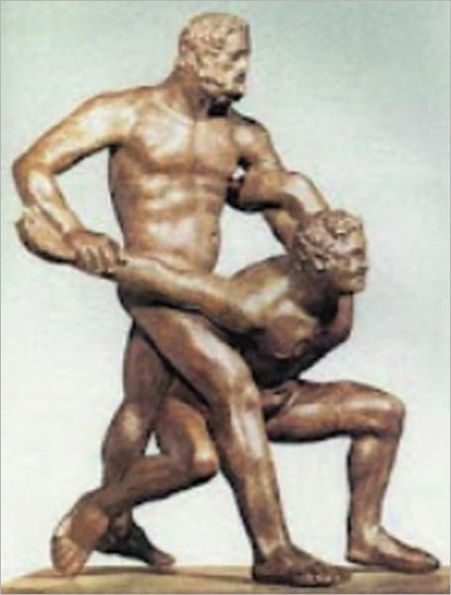SNEAK PEAK:
The Japanese Fighting Arts
Edited by John Goodbody
There is no end to training. Once you begin to feel that you are masters, you are no longer getting on the way you are to follow.
Hagakure Bushido
Karate
Hirokazu Kanazawa
1. History
The origins of karate are somewhat obscure. The most popular tradition traces them to the arrival in China of the fierce Indian monk Bodhidharma, or Daruma taishi, to give him his Japanese name. He is said to have arrived in Canton in AD 520 and he was also the First patriarch of Zen Buddhism in China.
Bodhidharma imposed the most severe discipline on the monks under him at the monastery of Shaolin. His students and their successors became famous for their physical prowess as well as their mental discipline and Shaolin was to give its name to one of the foremost schools of Chinese boxing. Shaolin boxing was introduced into the Ryukyu Islands, of which Okinawa is the main island, in either the fifteenth or the sixteenth century.
These were tough times in the Ryukyus. A succession of tyrannies, for their own preservation, had made the possession of weapons by any member of the civilian population a state offence. Understandably this boosted the interest in unarmed combat, producing a system called Okinawa-te, a mixture of Chinese and indigenous influences.
There were in fact many different 'schools' of Okinawa-te, each one carefully guarding its secrets from the others. Secrets had also to be kept from the ruling classes and from any individual who might have misused them. Therefore, all training was carried out in the early morning or late at night, or else behind locked doors. No beginner was accepted until his good character had been established.
Thus modern karate is the outcome of centuries of interchange between China, the Ryukyus and Japan. It only recently came to be openly taught to the public first in Okinawa and later in Japan. During 1917 and 1922 the late Gichin Funakoshi, President of the Okinawa Bushokwai, demonstrated his powers in Tokyo. Funakoshi was to become Supreme Instructor of the new Japan Karate Association and by 1935 karate clubs were established at most of the leading universities in Japan.
The contact with intellectual life at university was invigorating for karate. New techniques were developed, old ones improved, and elements which had always been regarded as mysterious and supernatural were regarded in a more rational light. It must be remembered, however, that karate students now more than ever derive moral and spiritual strength from their training.
2. Mental Development
The primary aim of practising meditation in karate is not to turn the fighting art or the sport into a religion. It serves a practical purpose.
Rigid patterns of thought and confused emotions always tend to obstruct the understanding and anticipation of an opponent. They close the mind, and meditation or 'mokuso' is the means by which you are able to clear it before training. Here is how to practice.
You begin by sitting on your heels, Japanese style. Your back is straight, chest out, shoulders down, and your nose must be vertically in line with you navel. Look straight ahead for a few minutes, then half close your eyes and fix them on a point two yards ahead of you on the floor. After a few more minutes completely close your eyes but continue to see the point on the floor in your imagination.
While you are a beginner, in order to forget whatever you may have on your mind, it may be helpful to concentrate on your breathing.
Imagine that you send the breath to the top of your head, down through the spine to the coccyx, the anus and the testicles, then concentrate it in the abdomen for a few moments. Return it through the chest to the mouth, breathe out and repeat.
Either routine should ideally be repeated at least once every day for five or ten minutes, and also before and after training. We have already mentioned its use before training. The purpose of 'mokuso' after training is to quieten the mental and physical excitement which a hard session necessarily entails. At this time it is practised by all the students, sitting in line, facing their instructor.
It would be difficult to exaggerate the importance of 'mokuso'. You may not appreciate it at first but you will soon feel the benefits if you practise it every day. It is the moments of complete blankness, of being empty of all thoughts, that enable you to cultivate the sixth sense that men have to such a large extent forfeited in return for intellectual development. It was precisely this sixth sense that enabled the mediaeval 'samurai' to fight in pitch darkness or anticipate the most cleverly concealed ambush.
Ultimately, karate should consist in the mental control of an opponent or opponents.
TO BE CONTINUED... Download now and enjoy the contents in full!



